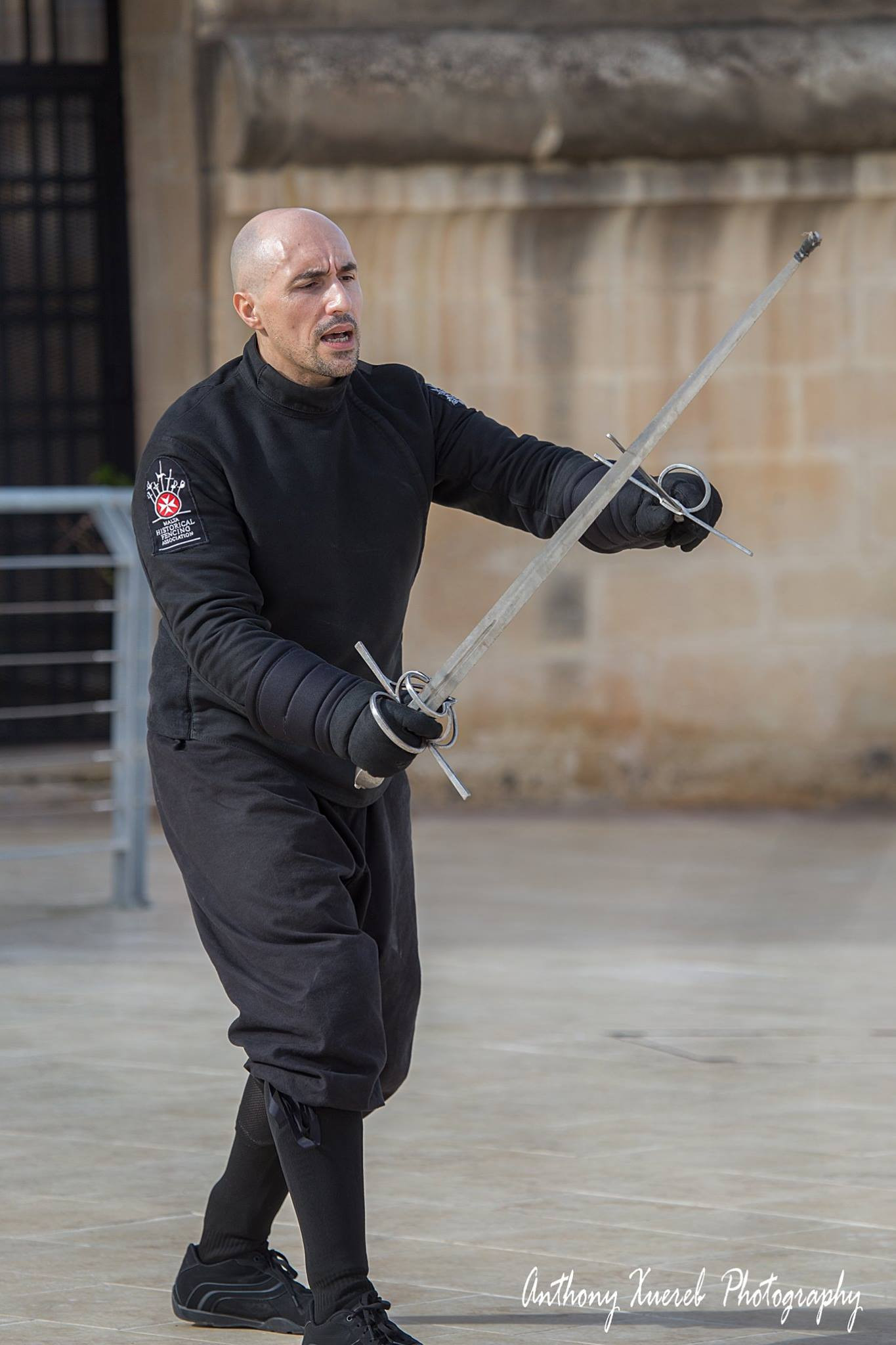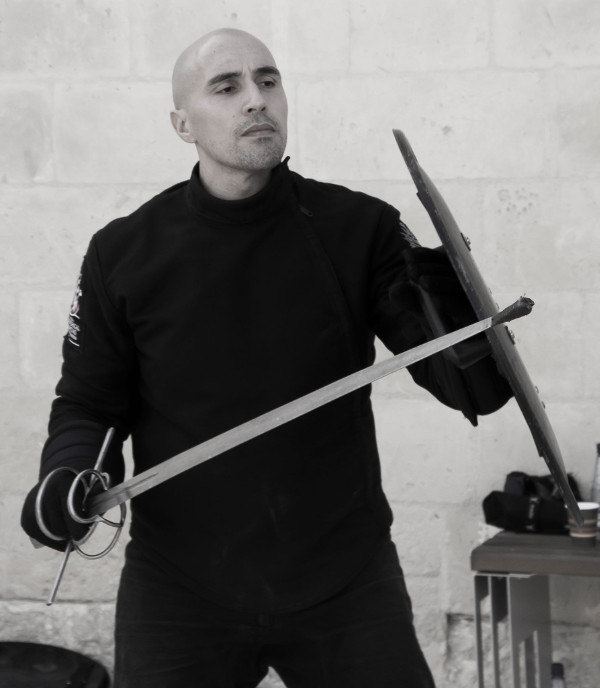The Sidesword
The term sidesword is intentionally broad, as it covers most swords which were worn as sidearms between the 14th and 16th centuries. The swords we are referring to have two cutting edges and a usable point, and tend to have some form of hand protection. Oakshotte refers to this kind of sword as a Reitschwert, or "Riding sword"; but since there is overwhelming evidence that many of these swords were used on foot, we prefer the looser term sidesword.
This type of sword closely resembles the earlier arming sword, although it tends to be rather longer. We distinguish between the two by considering whether the sword may be used alone. Arming swords generally have minimal hand protection and are designed to be used in conjunction with a buckler or a shield, while sideswords tend to have one or more rings to provide some protection for the hand.
The earliest forms may be as simple as a single ring over the guard to protect the index finger, while later forms include a succession of rings, guards and counterguards.
Being primarily a battlefield weapon, sideswords tend to be designed for versatility; there is no telling what one might be up against. When it became customary to wear swords in a civilian context thinner, longer swords became fashionable, giving rise to the
Some swords that are not sideswords
The variety of swords that could be found in the Medieval and Renaissance world is staggering, so some clarification might be useful here. To begin with, the term sidesword refers to blades with two edges, so we are automatically excluding single-edged weapons like the falchion, the messer, the backsword, and other hangers. While these weapons were used as sidearms for many centuries, they are considerably different in purpose and technique.
Similarly, broadswords and other basket hilted weapons like the schiavona are sufficiently different to fall outside this category. The degree of hand protection allows for far closer work than most sidesword treatises recommend.
Finally, two of the most iconic sidearms of the Renaissance, the Baselard and the Katzbalger, are not sideswords. The Baselard is essentially a long dagger, while the Katzbalger's short length and open guard would generally mean that anyone trying to use it like a sidesword would quickly lose a hand.
The De Valette Sidesword

In 2012, the Vittoriosa Local Council and the Parish of San Lawrenz kindly granted us the opportunity to inspect the sword of Grandmaster Jean de Valette which is exhibited in the Oratory of St. Joseph in Vittoriosa.
The results of this study were then shared with swordsmith Marco Danelli who was able to create a replica of the weapon which we could use for practice.
You can read more about the sword on our page dedicated to the De Valette Sidesword.
Sidesword and Dagger

Since daggers were commonly worn with sideswords - there are in fact several examples of matched pairs - they were often used to provide a second line of defence in the absence of a shield or buckler.
Because of the difference in length, the dagger is most often used defensively, although the close range of the typical sidesword fight means that it is far more present than it would be in a
Sidesword and Shield

The combination of sword and shield is a classic, and with good reason - it provides an excellent defence. Shields cover a considerable area which swords cannot cut or thrust through, effectively creating a moveable protective wall. fencing a shield-carrying opponent often boils down to maneuvering and feints to trick one's opponent into creating an opening.
Our practice concentrates mostly around the Rotella, a round shield with a handle which is offset from the centre and a strap which secures it to the forearm. This type of shield saw widespread use in the 15th and 16th centuries, and while the shape may be considerably different from the earlier heater type shields, the configuration of the handles means that it is more similar to them than it is to the older style boss shields with a single centre grip.
Case of swords
Historically the practice of using a sword in either hand was mostly confined to training or formal duelling. However, people who were able to pull it off were considered to be especially skillful; managing two swords of the same length does in fact require a good coordination. In principle having a sword in either hand works much like having a sword and a dagger, except that the weapons may be used interchangably for attack or defence.
Our Curriculum
The style of sidesword we practice is taught by Maestro d'Armi Andrei Xuereb and has the base structure and concepts of the Sinclair method as taught at FISAS in Italy, with additional research and development from historical sources. Some of the sources used as a reference to the system are taken from the treatises written by Agrippa, Palladini, Di Grassi, Viggiani, Lovino, Ghisliero, Saviolo, and Docciolini.
Back to weapons